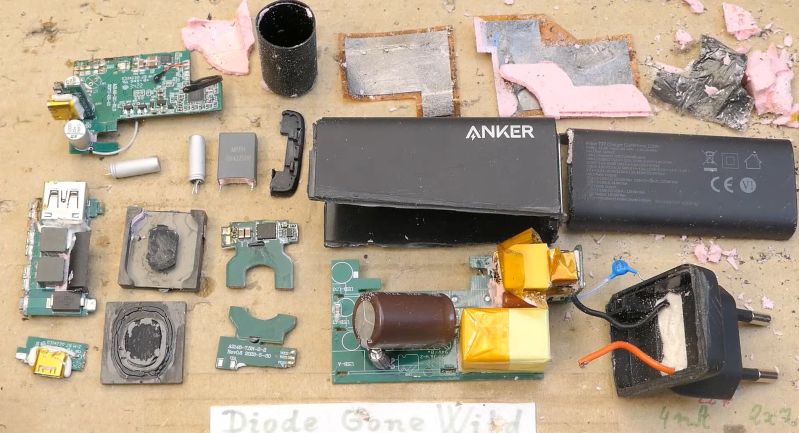Fault Analysis of a 120W Anker GaNPrime Charger

Taking a break from his usual prodding at suspicious AliExpress USB chargers, [DiodeGoneWild] recently had a gander at what used to be a good USB charger.

Before it went completely dead, the Anker 737 GaNPrime USB charger which a viewer sent him was capable of up to 120 Watts combined across its two USB-C and one USB-A outputs. Naturally the charger’s enclosure couldn’t be opened non-destructively, and it turned out to have (soft) potting compound filling up the voids, making it a treat to diagnose. Suffice it to say that these devices are not designed to be repaired.
With it being an autopsy, the unit got broken down into the individual PCBs, with a short detected that eventually got traced down to an IC marked ‘SW3536’, which is one of the ICs that communicates with the connected USB device to negotiate the voltage. With the one IC having shorted, it appears that it rendered the entire charger into an expensive paperweight.
Since the charger was already in pieces, the rest of the circuit and its ICs were also analyzed. Here the gallium nitride (GaN) part was found in the Navitas GaNFast NV6136A FET with integrated gate driver, along with an Infineon CoolGaN IGI60F1414A1L integrated power stage. Unfortunately all of the cool technology was rendered useless by one component developing a short, even if it made for a fascinating look inside one of these very chonky USB chargers.